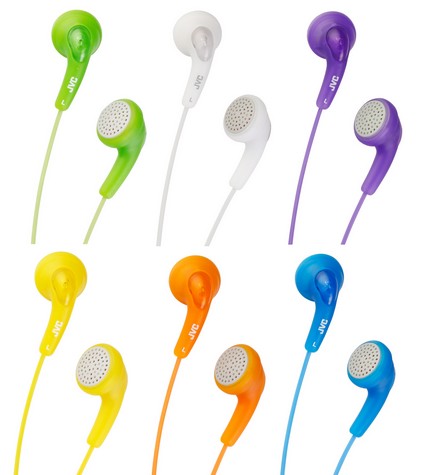Withers Product Design
Thursday, 29 September 2011
Friday, 9 September 2011
Moulding Processes
Plastic Processes
- The mould is the most important part of manufacturing
- Quick Process
- Quiet
- Granulated Plastics (Thermoplastics)
The stages of injection moulding:
- Tolerance
- Hydraulic Press
- Injection moulding uses granulated plastic
- Granulated plastics heat quicker- The mould is the most important part of manufacturing
Injection Moulding
- No waste material
- Lots of detail to the finished product (e.g Bottle lids)- Quick Process
- Quiet
- Granulated Plastics (Thermoplastics)
The stages of injection moulding:
- Granulated plastic is fed from the hopper into the injection moulding machine
- It is then fed onto the rotating screw (Archemidial Screw), the screw carries the plastic along the barrel to the mould. Heaters surround the barrel so it melts the plastic as it travels along the screw.
- Once the melted plastic has reached the end the screw pushes the melted plastic into the mould
- It is then left to cool, and is then removed from the mould.
- Tolerance
- Hydraulic Press
- Powdered plastic
- Used to make anything with a slight indentation inThe stages of compression moulding
 The mould is heated
The mould is heated- The piece of plastic is placed into the mould as it heats up
- The hydraulic press begins to move down once the plastic has reached the correct temperature
- As the upper and lower mould meet, the plastic is compressed into the shape of the mould
- The upper mould is then removed and the plastic is left to cool
Rotational Moulding
Stages of rotational moulding:
- The hollow mould is filled with powdered plastic which has to be weighed correctly to avoid the product being too thick
- The mould is then closed and begins to be heated up
- Once the mould is heated fully it begins to rotate
- Whilst rotating centrifugal force means that the plastic forms a layer around the edge of the mould
- This is then cooled and removed from the mould to form a hollow shape.
Thursday, 8 September 2011
Plastics
There are two different types of plastics and they each have very different properties:
- Can be reshaped
SHAPING PLASTICS IS ALWAYS A HEAT PROCESS
Polymers
A general summary of polymers:
- Thermosetting is cross linked monomers
- Thermoplastics are chains of monomers
- Thermoplastics
- Can be reshaped
- They have chains of monomers with no links between them
- Thermosetting Plastics
- Can't be reshaped once cooled
- There are links between the monomer chains to stop movement between them.SHAPING PLASTICS IS ALWAYS A HEAT PROCESS
Polymers
A general summary of polymers:
- Good electrical and thermal insulators
- Good strength to weight ratio
- Generally goo resistance to atmospheric and chemical erosion
- Low melting point
- Lightweight
- Available in a wide range of colours and transparency
- Two main categories, Thermoplastics and Thermosetting plastics
- Thermosetting is cross linked monomers
- Thermoplastics are chains of monomers
Thermoplastics
- ABS- Acrylonitrile Butadiene Styrene
- CA- Cellulose Acetate
- Nylon- Polyamide
- PMMA- PolyMethylMethAcrylate- Acrylic
- PP- Polypropylene
- HIPS- High Impact Polystyrene
- PS- Polystyrene
- LDPE- Low Density Polyehtylene
- HDPE- High Density Polyehtylene
- uPVC- Polyvynil Chloride
- PVC- (Unplasticised flexible) Polyvynil Chloride
- PC- Poly Carbonate
- Epoxy resins- surface coatings and adhesives
- Melamine Formaldehyde- Tableware and decorative laminates
- Polyester Resins- Castings, Used in GRP
- Urea Formaldehyde- Electrical fittings and Adhesives
Assignment One

I purchased my first pair of JVC Gummy headphones to match my coloured Ipod. Being a reasonably well known brand for electronic devices such as headphones and speakers i was expecting good quality merchandise. Firstly the headphones worked very well giving good quality sound, were very comfortable to wear and were flexible enough to wrap around the Ipod itself without breaking.They lasted well until a few months into using them when they started crackling and cutting out. This only appeared to be happening in the the left headphone which was the headphone i happened to use the most. I persevered with the problems first but after a while they became a nuisance to use. The headphone casing and the connection was fine and there seemed to be no problem with how they were working only in speakers inside. I decided after a while to change back to normal apple headphones, as they were more suitable.
Having not yet learnt my lesson i chose to purchase a second pair of JVC Gummy headphones thinking that this time they would last for longer. Unfortunately the same thing happened again, this time the problems seemed to occur sooner than the previous pair. only having these a few weeks they began crackling and cutting out, this time it seemed to be a problem with the connection between the headphones and the Ipod itself. After fiddling with the connection i thought i had resolved the problem, but after a little while the crackling and cutting out started again. After purchasing this brand of headphone twice and having problems both times i would definitely not purchase them again. In this case it is definitely form over function, i chose the headphones because i liked what they looked like and saw that they were a well recognised brand, but having seen that they are not long lasting i would say to not purchase them again.
Subscribe to:
Comments (Atom)

















